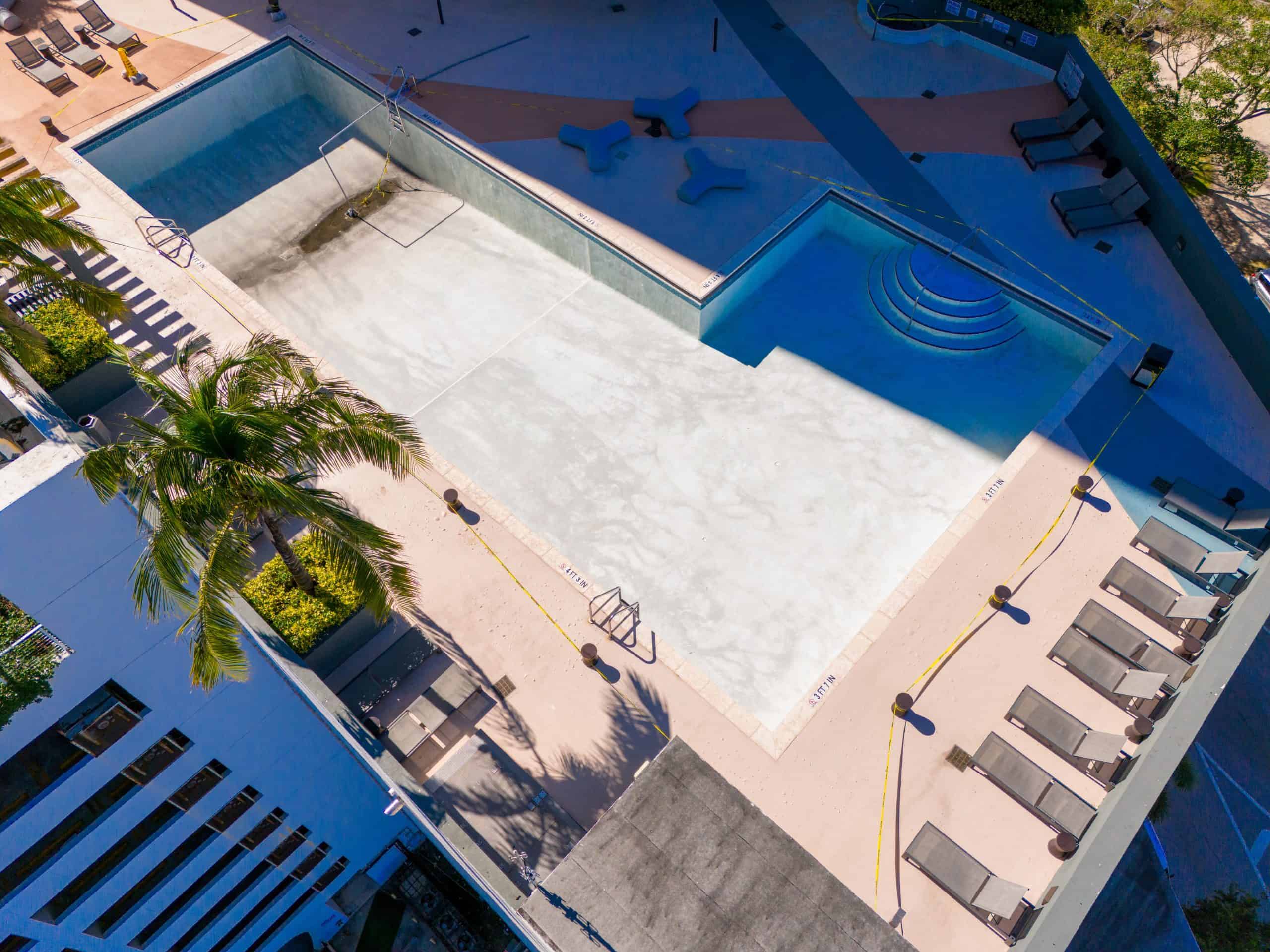Transform cracked, stained surfaces into the pristine pool you deserve with Florida-tested materials and expert pool resurfacing techniques.


Your pool stops being a source of stress and becomes the backyard centerpiece you can actually enjoy. No more rough surfaces that scrape skin or embarrassing stains that won’t come clean.
You get a swimming environment that’s safe for your family and impressive for your guests. The kind of pool that adds real value to your Marina Isles home while cutting down on those constant repair calls and chemical adjustments.
Most importantly, you reclaim your weekends. Instead of dealing with surface problems and maintenance headaches, you’re back to what pools are supposed to be about—relaxation and fun.
We’ve been handling pool resurfacing projects throughout Broward County for years. We understand exactly what Florida’s climate does to pool surfaces and how to build finishes that last.
Every project gets the same thorough approach: proper surface preparation, quality materials that can handle UV exposure and temperature swings, and installation techniques that prevent the common failures other contractors miss. We’ve seen every type of pool surface problem that develops in South Florida and know how to fix them right the first time.
Marina Isles pool owners deal with specific challenges like salt air exposure and UV damage that accelerate surface deterioration. The materials and techniques we use account for these local conditions, not just generic pool resurfacing approaches that might work in other climates but fail here.

First, the existing surface gets completely removed and we assess your pool’s structural condition. During this phase, you’ll see exactly what shape your pool shell is in, and we’ll handle any necessary repairs before moving forward.
Next comes proper surface preparation—the step that determines whether your new finish lasts its full expected lifespan or develops problems early. We use techniques specifically designed for Florida’s challenging climate conditions.
Finally, we install your chosen finish material using methods that ensure proper bonding and longevity. The process includes startup procedures, chemical balancing, and detailed care instructions for the critical first month. This curing period is essential—skip these steps and even the best materials can fail prematurely.

Ready to get started?
Your pool resurfacing includes complete removal of the old surface, structural assessment and repairs, professional surface preparation, and installation of your chosen finish material. You get quality materials designed for Florida’s climate and proper application techniques that ensure longevity.
The process also covers startup procedures, chemical balancing, and detailed care instructions for the first month. This curing period is critical—skip these steps and even the best materials can fail prematurely. You’ll know exactly what to do and when to do it.
Marina Isles homeowners often choose from plaster, aggregate, or pebble finishes based on their budget and preferences. Basic plaster resurfacing typically starts around $4-6 per square foot, while premium aggregate finishes run $8-12 per square foot. We’ll walk you through the options and help you choose a surface that’s both beautiful and functional for your specific situation.

Ready for a Pool You'll Love?
Contact us today for a free quote!
DCP Pool Services
Company
Useful Links